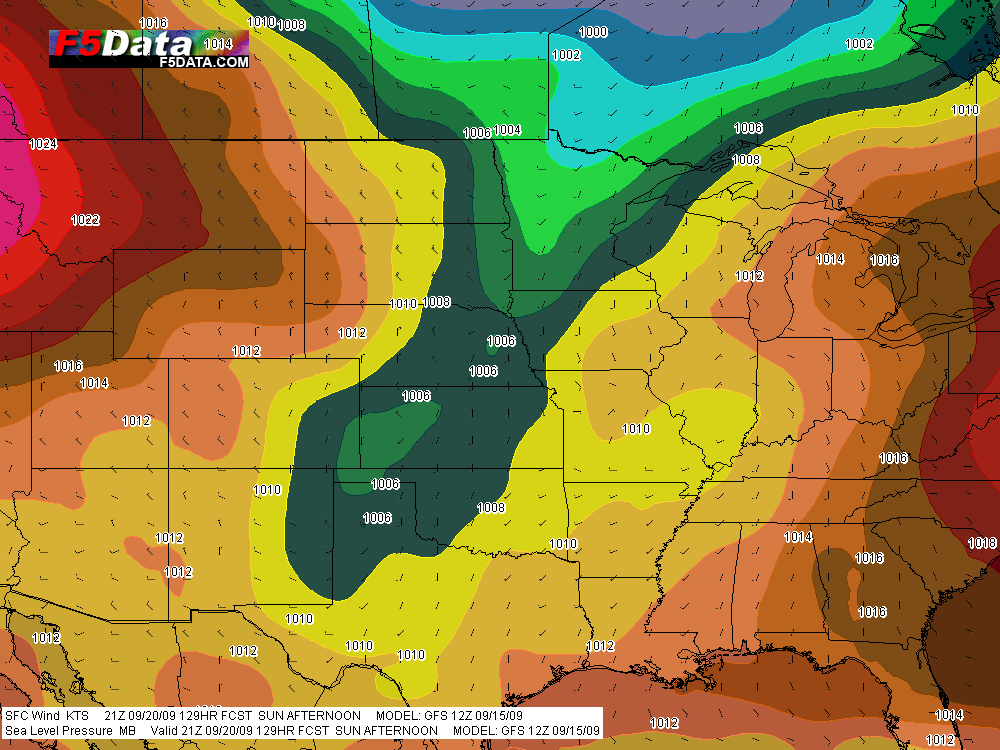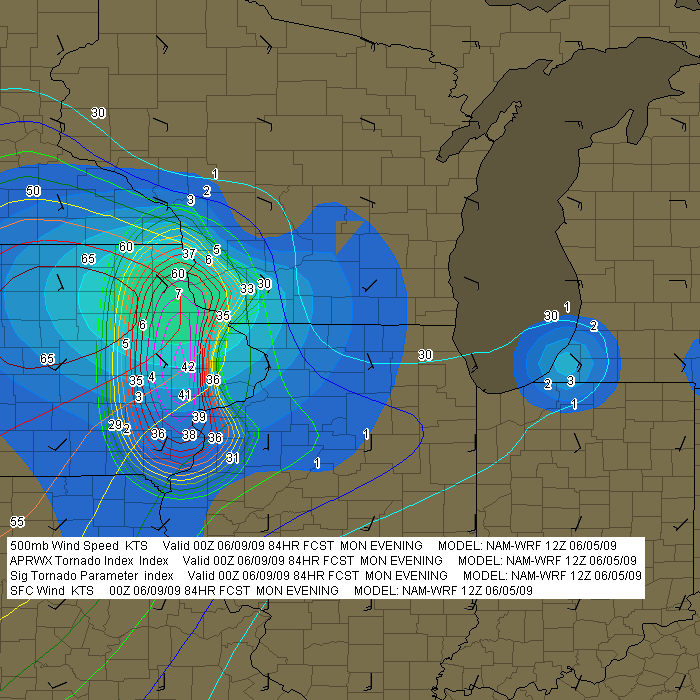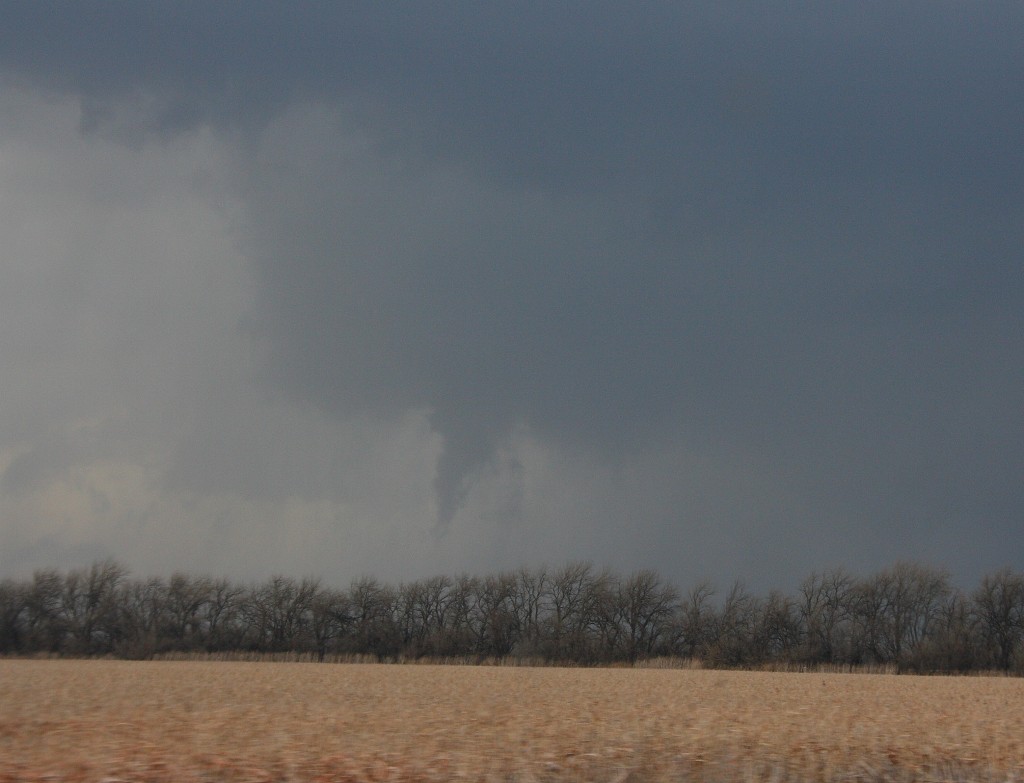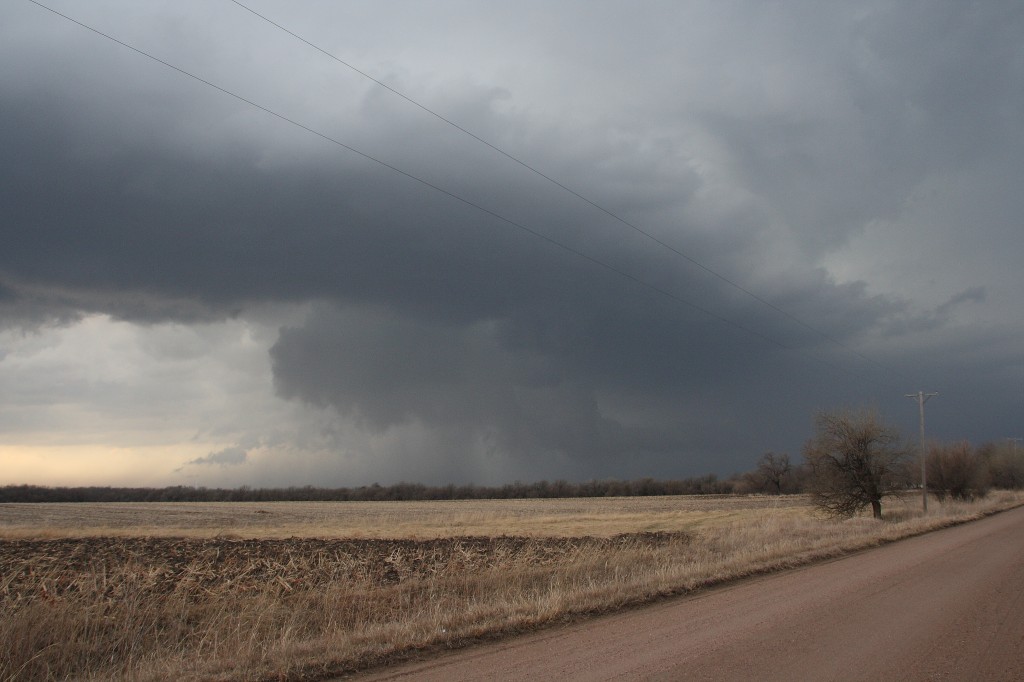I’m prepared to get my hopes up a bit. The ECMWF and GFS both now appear to agree on a trough working its way through the country’s mid-section. Here’s the current GFS for 21Z Sunday afternoon:
Granted, there’s a lot more that needs to happen, such as mid-level winds and moisture connecting, but this will do for starters. It’s a better picture than yesterday.
The GFS wants to move this system through faster than the ECMWF, but at the moment I’m not going to worry my head about it. All I care about right now is, both forecast models are pointing to a bit of troughiness taking shape. It’s something to keep an eye on. Fingers remain crossed, and while I’m still not holding my breath, I’m hoping that the next few days will offer some reasons to do so.





